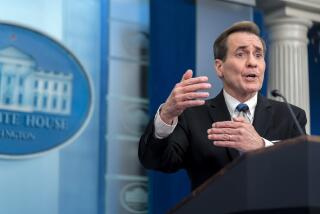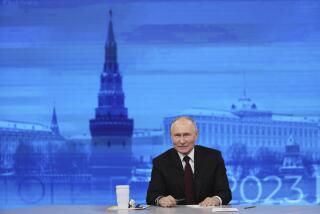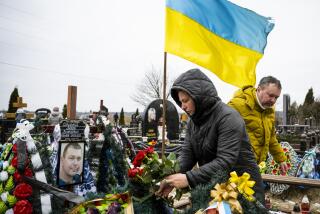Same Title, New Contents
This year’s Pentagon report on Soviet military power differs notably in tone and emphasis from preceding volumes. During the Reagan Administration, the annual military assessments examined Moscow’s strategic capabilities and its inferred political intentions through the gloomiest of lenses. Last year’s volume, for example, warned that the Soviet Union might be preparing to invade and overrun Iran, a rather astonishing suggestion in light of the Soviets’ miserable and still-continuing failures in neighboring Afghanistan. In this year’s book, the Pentagon concedes simply that a Soviet attack on Iran is quite unlikely.
What’s changed? The Soviet Union, for one thing. The Soviets haven’t disarmed--far from it--but the threatening rhetoric of earlier decades has virtually disappeared, and the signals of genuine interest in a quieter, less suspicious, less threatening world are growing more pronounced and being taken more seriously. If the Soviet Union hasn’t explicitly abjured armed expansionism, it is at least acknowledging the crippling restraints that its constricted and mismanaged national resources place on any such ambitions. The plain fact is that the Soviets now face the prospect of economic calamity if not outright collapse. If social and economic disaster are to be headed off, the system must stop giving primacy to unproductive military spending. Priorities are changing, and with them the perceived course of the Soviet Union’s international political behavior.
A change in American administrations has brought a change in the defense outlook as well. The seven previous editions of “Soviet Military Power” were intended not only to give an accounting of what the Soviet armed forces looked like, but also to justify and mobilize support for the massive U.S. military spending of the Reagan years. That led to the annual reports suffering from a certain heavy-handed flavoring of editorial comment. That in turn had the effect of sometimes raising doubts about the credibility of the assessments as a whole.
In recent years, U.S.-Soviet relations have changed dramatically. One indication can be found in the growing frequency of high-level military exchanges. On Sunday, as an example, Soviet Defense Minister Marshal Dimitri T. Yazov begins an official visit to the United States, something that just a few years ago would have seemed unthinkable. The change in the international atmosphere has contributed to the conclusion in this year’s Pentagon report that “the likelihood of conflict between the United States and the Soviet Union is perhaps as low as it has been at any time in the postwar era.”
That assessment, as the report makes clear, doesn’t mean that the Soviets aren’t still a formidable military power, or that the Soviet Union isn’t strategically still a “major threat.” But under Mikhail S. Gorbachev, the report notes, “the Soviet leadership has begun to reassess the utility of military force as the most effective means of achieving . . . foreign policy objectives.” Some might find that to be an excessively cautious judgment. But at a minimum it’s a plausible one, and the change in tone from what went before is clear and welcome.
More to Read
Sign up for Essential California
The most important California stories and recommendations in your inbox every morning.
You may occasionally receive promotional content from the Los Angeles Times.










